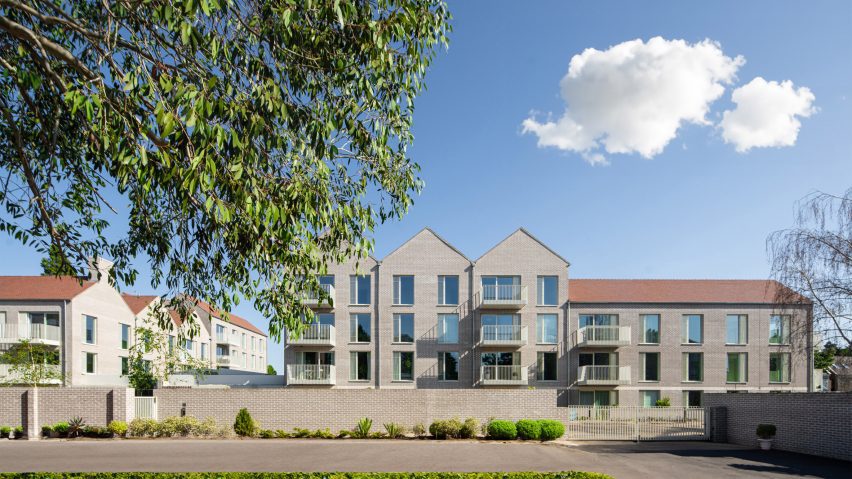
Coffey Architects designs retirement complex in Surrey to foster neighbourly connections
British studio Coffey Architects has completed Cobham Bowers, a later-living housing community in Surrey designed to create "a seamless blend between personal and communal living".
Developed in association with retirement housing specialist Pegasus, the scheme consists of two gabled residential blocks arranged around a low-lying communal pavilion and flint-walled central garden.
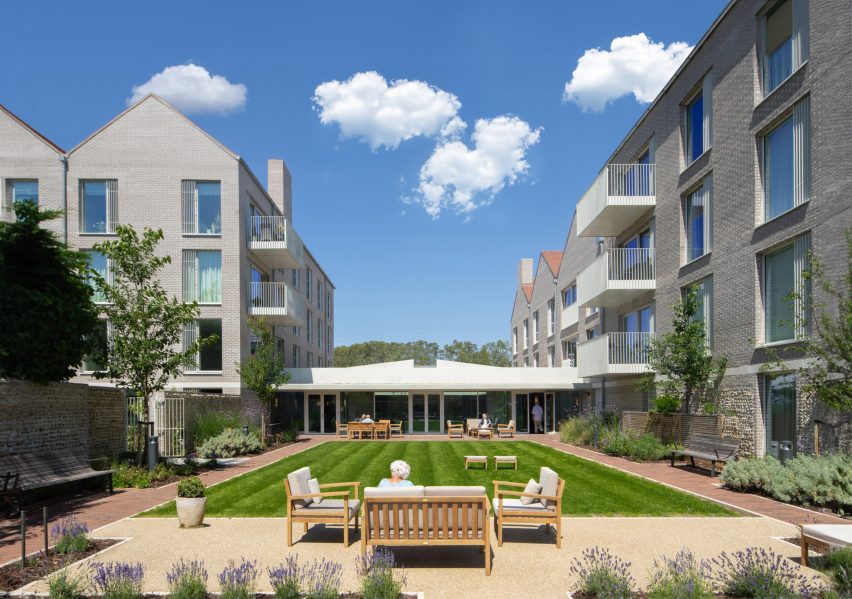
"The design and layout is focused on engendering a sense of community and neighbourliness and maximising the opportunity for residents to get outside," Coffey Architects director Lee Marsden told Dezeen.
"Placing the comfort and well-being of the residents at the forefront, we ensured that every aspect of the design exudes beauty without compromise," director Phil Coffey added.
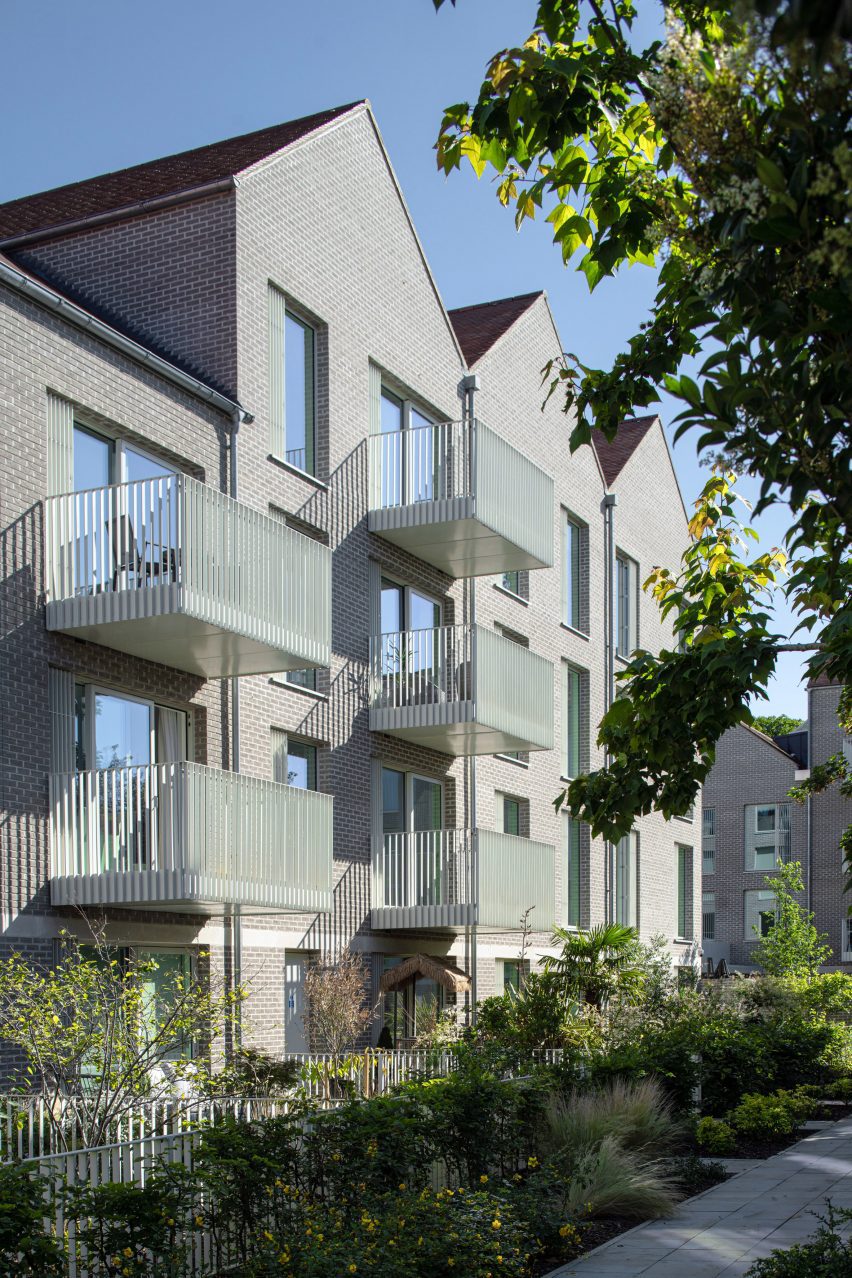
The brick-clad residential structures contain 53 one or two-bedroom apartments grouped in clusters of four around localised private lobbies.
Utilising the compact apartment footprints, Coffey Architects configured the rectilinear buildings to maximise opportunities for dual aspect orientations throughout the L-shaped site.
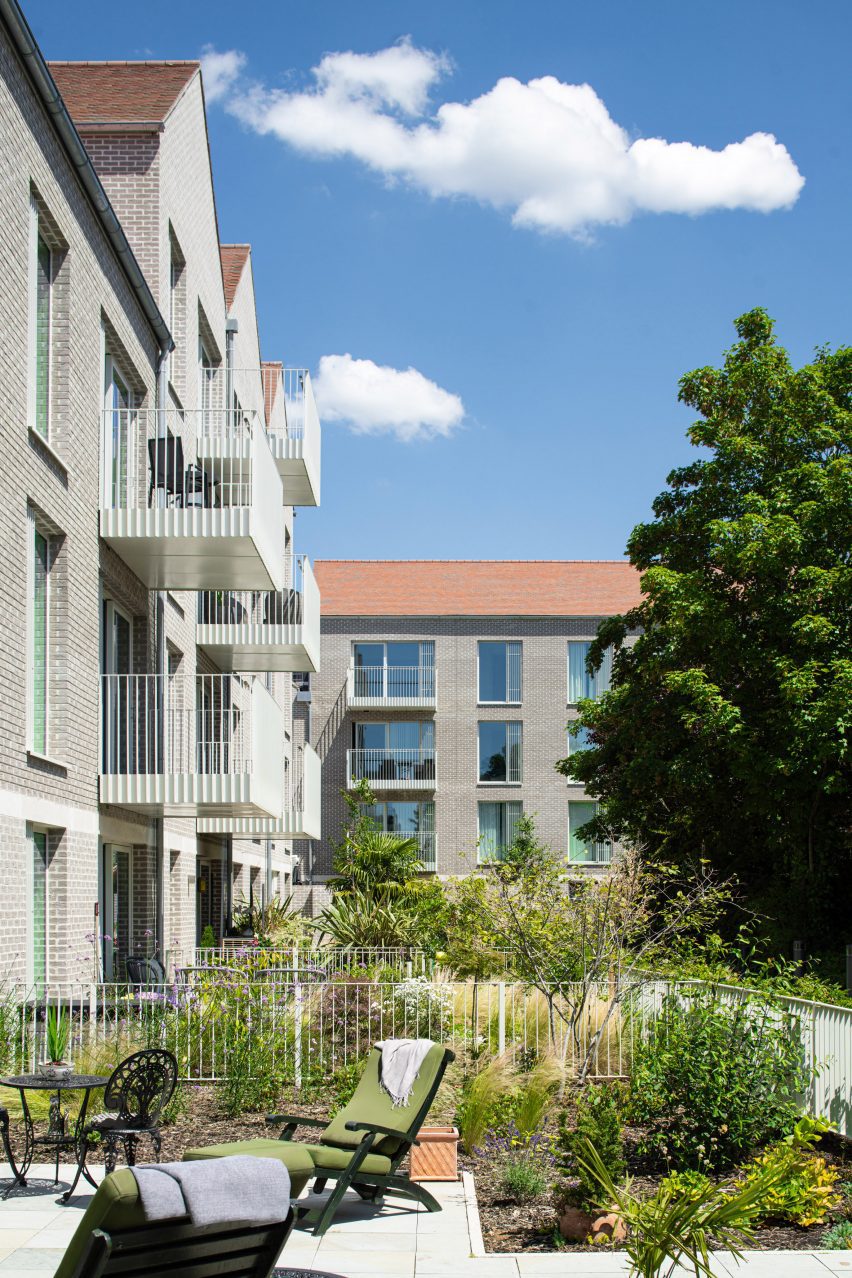
Living spaces were integrated with extensive glazing, balconies and terraces, which the studio combined to harness natural light, while also seeking to encourage visual connections with the locality.
"We prioritise bright, spacious living areas that welcome natural light and the longest views out," Marsden explained. "Each apartment has a balcony or terrace, and all windows extend from floor to ceiling to really enhance that connection."
"The circulation spaces within the community [are also] generously proportioned and well-lit, enhancing the overall experience and facilitating a seamless blend between personal and communal living."
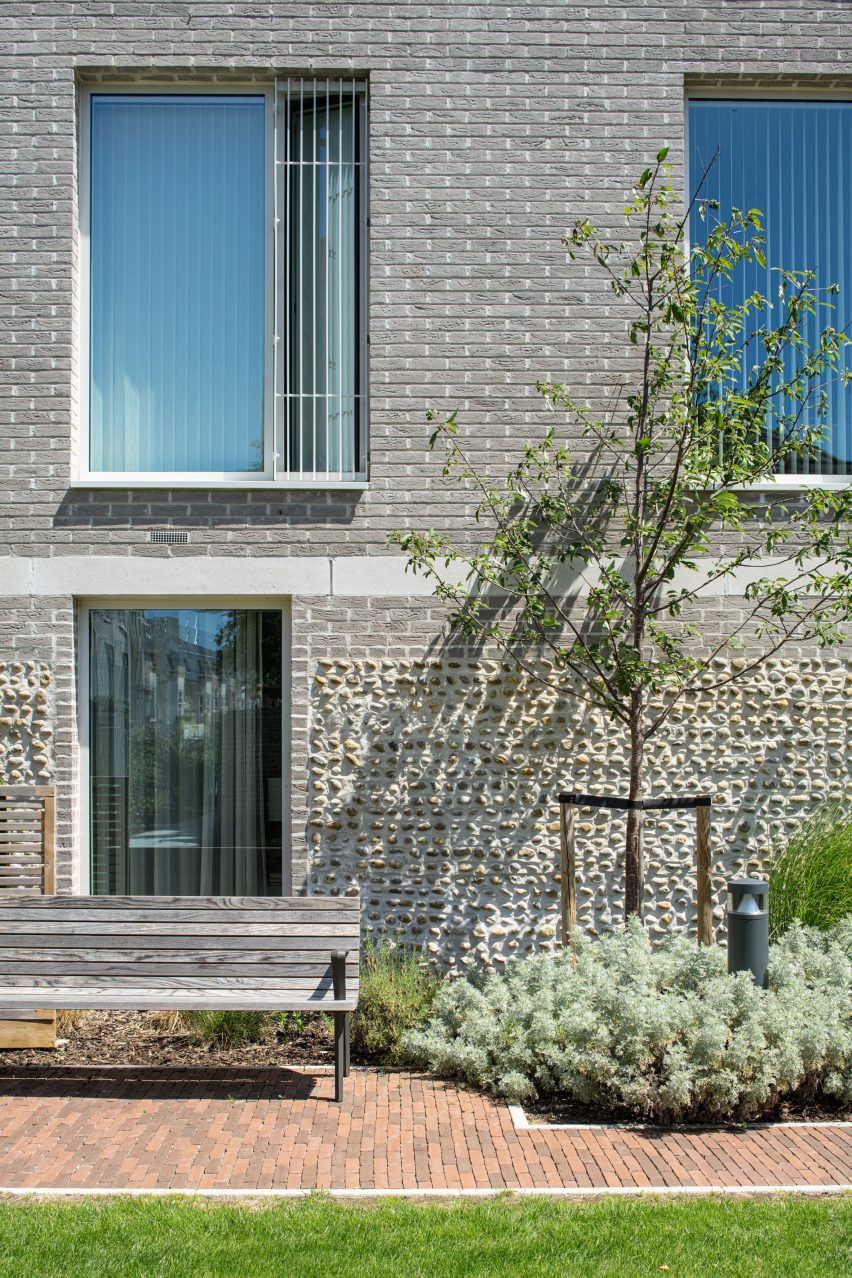
Nestled at the centre of the site, a ground-floor entry pavilion provides residents with shared multi-functional spaces adjacent to the courtyard garden.
"The pavilion and walled garden at the centre of the plan creates a sequence of spaces which provide a clear and legible transition from public to the 'outer' walled garden," Marsden said. These were designed to act as a "semi-public threshold to the pavilion".
The garden was conceived to echo nearby Painshill Park and was enclosed by walls lined with locally sourced flint, communal seating and landscaped edges.
Aiming to harmonise further with the surrounding vernacular, the studio used multi-directional pitched gable roofs to signal the community's presence from the streetscape.
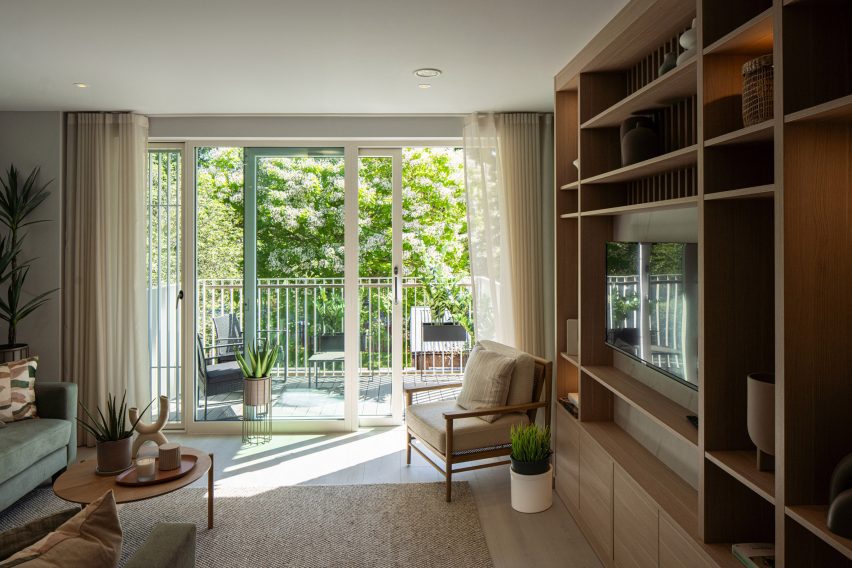
Light grey brick with white mortar, red tile roofing and unknapped flint define the exterior of the buildings.
"The light-coloured brick contrasts with the older local brick buildings nearby, while the more traditional, red clay tile used on the roof connects back to the village from longer views," the studio explained.
"A single tone of brick was chosen for coherence of the residential blocks, but we made sure to allow for subtle difference in form to provide identity. Contrast at ground level is provided by a distinct raked mortar finish to add character."
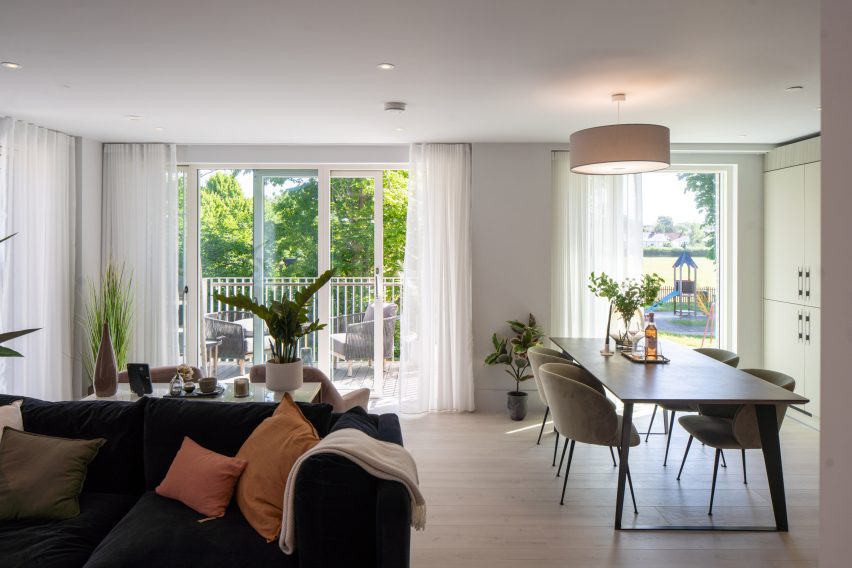
Coffey Architects was established by Phil Coffey in 2005.
Other recent projects by the London-based studio include a mixed-use housing and arts space project occupying a former industrial estate in Bermondsey and a contemporary home in Dorset informed by rural barns.
The photography is by Phil Coffey.